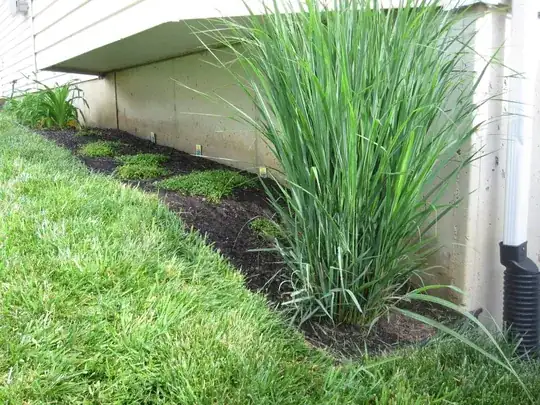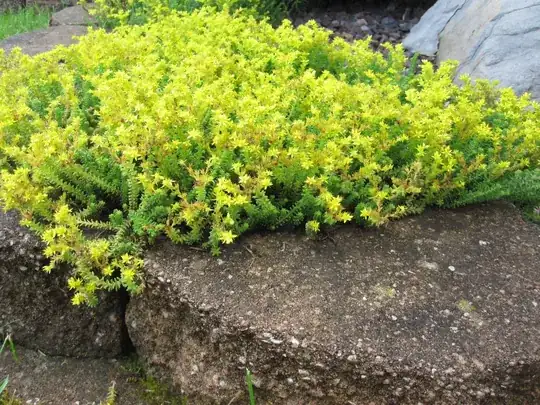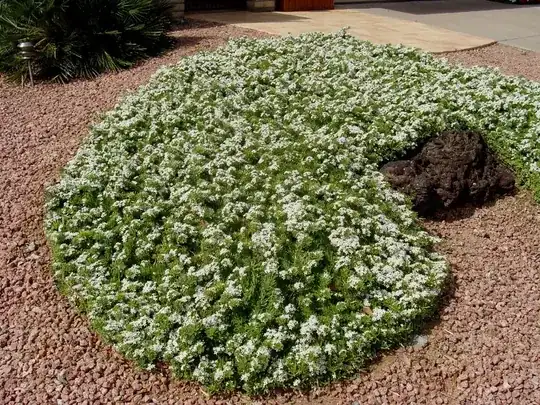Where I live (Adelaide plains, South Australia) it's very hot and dry in summertime and so I think a lawn is a waste of water if you don't get to enjoy it, such as where the yard is exposed to the street.
What is a good ground cover to put in the front yard plot to:
- prevent weeds;
- look "nice" for the neighbourhood (there isn't a specific law, but strong expectation);
- survive pretty much by itself, perhaps with a little extra watering midsummer, but must be hardy; and that
- will only need trimming four or less times a year.
Bonus for something that is easy to either trim with clippers or possible to mow with very high setting.
The plot I need to cover with something is approximately 2x5m, has standard roses at the front edge already, and is backed by a huge bougainvillea at the side. The soil is not great, so I'll probably turn in 0.5-1 cubic metres of compost before planting ground cover.
UPDATE: Must be able to survive in summer. Means can handle four-day heatwave reaching to 45 degrees (113 F) mid afternoon.




